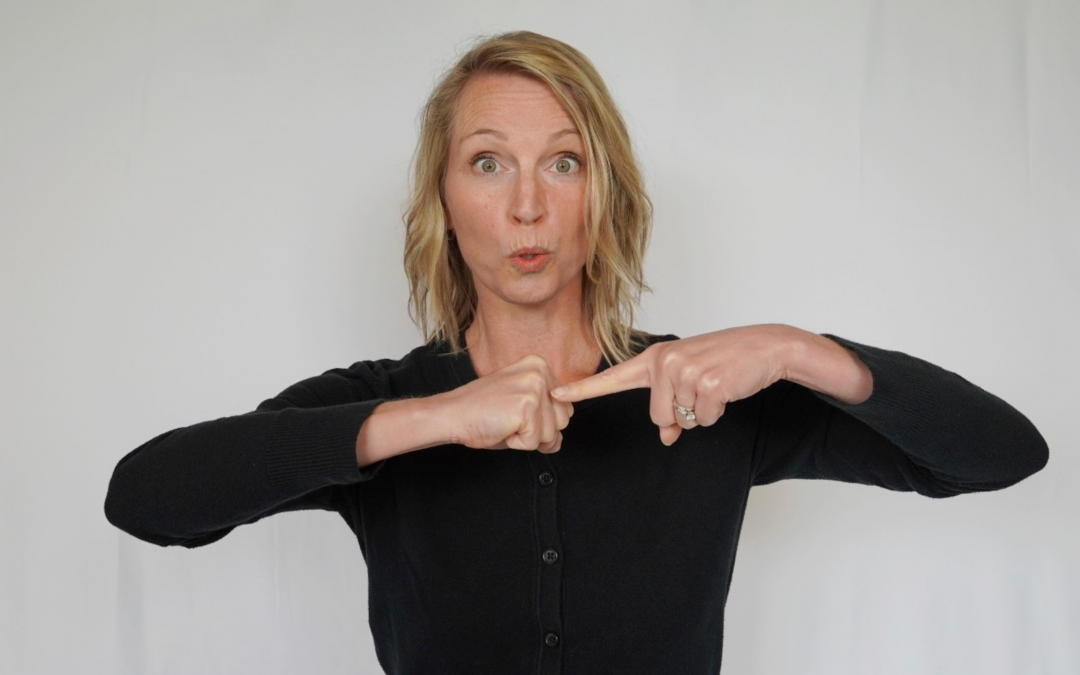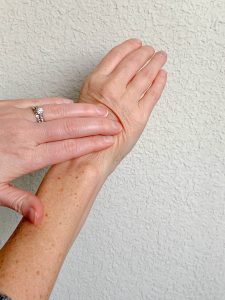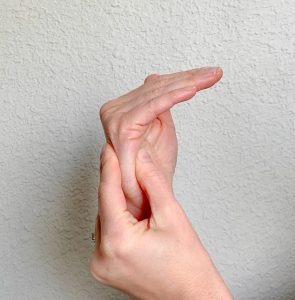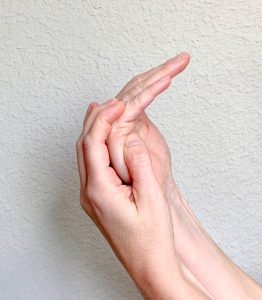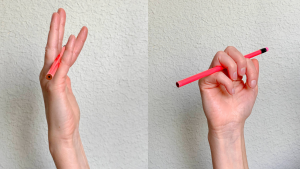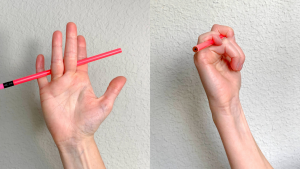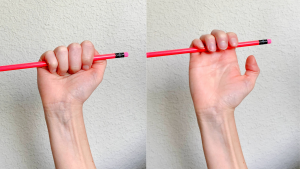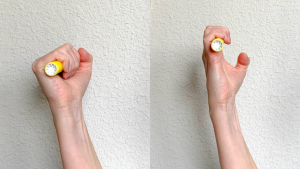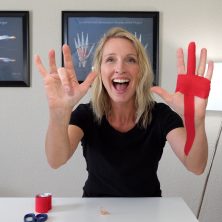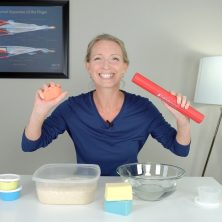Boxer’s Fracture Recovery Exercises for Hand and Finger Mobility
In this blog post, I’m going to show you 6 of the best boxer’s fracture recovery exercises for hand and finger mobility.
Looking to improve your hand grip or increase the function of your hand after a boxer’s fracture? Then these small finger fracture exercises are the way to get moving.
Bonus points because no fancy equipment is needed. All you’re going to need is a pencil.
Before we get started, always check with your doctor before you start these exercises or any exercise program. You do not want to do these small finger exercises if you are not healed.
Why are these boxer’s fracture exercises so special?
The short answer is they are simple, yet highly effective.
As you may be finding out, you kind of need your small finger. I hear a lot of people say “It’s just a pinky finger” or “the small finger doesn’t do much.”
They obviously never broke their little finger. Huh?
All I have to say to them is hold your small finger out straight and try to grasp something large, or try to squeeze something small. Heck, try holding pennies, marbles, or medication in your palm.
Challenging isn’t it?
My point is the small finger helps with strength, coordination, and more importantly overall functional use of your hand.
So these boxer’s fracture recovery exercises for hand and finger mobility are crucial to get your hand back to normal.
Let’s get started!
Boxer’s Fracture Recovery Exercise Number 1: Warm Up
First, we are going to start with a warm up exercise. This is a very important step because you can’t expect to go right into making a fist. You’ve got to loosen up those small joints, ligaments, and muscles in the hand.
What you want to do for this first exercise is take your opposite hand and start massaging the back of the small finger metacarpal.
Start with circular motions along the back of the hand, then massage up and down, and across the metacarpal bone.
You can also massage the palmar side of the pinky finger. That’s where you will feel more of the musculature in the hand.
But the back of the hand is not like the palmar side.
We don’t have as much musculature or thick fascial tissue. The back of the hand is composed mostly of tendon, bone, and skin. Sprinkle in some tiny nerves, and blood vessels and that’s it.
Therefore, tight skin from swelling on the back of your hand can limit your small finger mobility.
Basically, what you want to do with this warm up is get that skin and tissue moving to improve your motion .
Let’s try this on your other hand.
If you pull down on the skin over your other hand, it pulls your fingers straight right?!
Then if you try to curl your finger it feels really tight.
When you have swelling from a Boxer’s fracture and you’ve been immobilized in a splint for a while, the skin isn’t nice and loose. The swelling causes the skin to become very tight and we lose that elasticity we need to bend our fingers.
Wrinkles mean loose skin.
I actually like wrinkles on the back of our hands. Really anywhere you have a joint. That means your skin is mobile and isn’t preventing you from bending your fingers.
You’ll want to spend a few minutes here warming up, loosening up, and massaging the skin on the back of your hand. Take your time on both sides of your hand.
If you notice your skin isn’t moving and it’s because you have a scar, then you’re going to want to address your scar tissue too.
I do have a really helpful video of how to use tape to help with an adherent scar. I’ll link that here so check that video out if you need help for your scar.
Adding moist heat can be another great way to warm up your hand before these next exercises. Check out how you can use moist heat to help with your stiffness after a boxer’s fracture.
Boxer’s Fracture Recovery Exercise Number 2: Knuckle Benders
This exercise is actually for the metacarpal phalangeal joint, aka knuckle. You are going to work on moving your MP joints into flexion.
First, you want to move your skin around just like you did in number 1. But now you are going to bend your fingers into flexion at the same time.
Make sure your wrist is back in a little bit of extension. And make sure you are not blocking your distal palmar crease or you will prevent your MP joint from bending.
To do this exercise correctly, place your other hand on the back of the skin and then your thumb on the palm, making sure to to clear the distal palmar crease. That is where the knuckle bends forward. Make sure that you’re only bending at the MP joint, not the DIP or PIP joints.
Actively flex as far down as you can and straighten all the way. If you’re feeling a lot of soreness and stiffness, remember to massage the skin and fascia around to see if you find some relief then bend and straighten. Typically when you bend, moving the skin toward your knuckle feels best.
Remember not to overdo it, progress nice and slowly.
You want to perform about 10-20 of these. Repeat several times a day or as needed.
Boxer’s Fracture Recovery Exercise Number 3: Knuckle Bender Stretch
This is very similar to exercise number 2. But this time you are going to give your knuckle a little bit of a boost by applying a passive stretch. To do this exercise you will want to apply a moderate amount of pressure from your other hand.
Get comfortable by propping your elbow up on a pillow or towel. Make sure your wrist is bent back in a little bit of extension and your fingers are relaxed. Place your opposite hand on top of your ring and small finger knuckle.
Push down into as much metacarpal flexion as your fingers can go. Hold this stretch for 5-10 seconds. Then relax.
When you release the stretch just simply let your fingers relax down. Avoid going into full extension.
The reason why you don’t want to go completely straight right after you just pushed your fingers into flexion is because you want each exercise to build on one another.
Plus if you always straighten or move into the opposite position… for starters that can be painful. Secondly, you might lose a few degrees of flexion you were gaining with each stretch.
You will want to repeat these knuckle bender stretches about 10 times, hold for 5-10 seconds. Repeat 2-3 times a day or as needed.
By now, you should feel like you have more hand and finger mobility.
If not, you have 3 more boxer’s fracture exercises to go!
Boxer’s Fracture Recovery Exercise Number 4: Pencil Extension Exercise
For this exercise, you are going to need a pencil. You are going to use it to work on straightening, also known as extension.
Typically with a boxer’s fracture, or really any kind of finger fracture, the PIP joint can be the most troublesome. And if you are experiencing a stiff middle joint then this little exercise is going to help with that.
You can use the pencil in a couple different ways, whatever is comfortable for you. Keep in mind, you may want to wrap the pencil with a little bit of coban or tape. The hard pencil can cause a little soreness on the back of your small finger.
The pencil should be on the palm side of your middle finger and ring finger and the back side of your index and small finger. As shown here.
An alternative is to weave the pencil so that your index finger and ring finger are on top of the pencil, and your middle and small finger have the pencil on the back side.
I’m going to do it the first way because it is more comfortable for me. You may need to hold on to the pencil to secure it in place.
Next, actively straighten all your fingers together.
Give special attention to extending your small finger against this pencil.
Hold for 2-3 seconds, then allow your fingers to relax.
Straighten your fingers again, making sure the pencil does not move around. You want to feel the pencil blocking your small finger metacarpal but allowing your small finger PIP to straighten.
This exercise is actually preventing your knuckle from hyper extending because that is usually what happens when you try to straighten your small finger. As shown here.
If you notice this sort of extension pattern in your hand then you will definitely want to do this exercise.
Your PIP joint will not straighten unless you can counteract your small finger knuckle from hyperextending.
Boxer’s Fracture Recovery Exercise Number 5: Pencil Flexion Exercise
Sticking with the pencil, we are going to use it to help improve your small finger flexion.
Now, you want to move the pencil to the front of the small finger. This way your small finger has something to curl over.
The easiest way is to place the pencil on the palm side of your index and small finger, but on the back side of your middle and ring fingers.
Once the pencil is secure between your fingers, flex all your fingers over the pencil. Then straighten them. Repeat by flexing all your fingers, especially your small finger, over the pencil. Hold for 2-3 seconds and then straighten.
This is a great exercise to get that last little bit of DIP and PIP flexion you need to make a tight fist.
You can do 10-20 repetitions of these, a couple of times a day.
Boxer’s Fracture Recovery Exercise Number 6:
Finally, this is the last exercise.
By now your small finger should be feeling a little more mobile.
This one might be a little difficult for you to do if you are still dealing with stiffness after your boxer’s fracture. You will want to use your pencil again for this one.
However, if it’s too difficult, use a highlighter or something that is a little bit thicker for now.
Curl all your fingers around the pencil using a hook fist. To do this, keep your knuckles completely straight but flex your DIP and PIP joints around the pencil or highlighter.
Now, curl down into a full fist and back up into a hook fist. Repeat- Hook fist to full fist, to hook fist to full fist and so on. All while holding onto the pencil or highlighter.
As you can see this requires a lot of range of motion and flexibility in all the fingers.
When first starting out use something a little bit wider, such as a highlighter, then challenge yourself to something smaller like a pencil or chopstick.
Ideally, you’ll want to do 10-20 repetitions, a couple of times a day.
Conclusion
Your small finger is an important part of your overall hand function. You need it for both strength and fine motor coordination.
These boxer’s fracture recovery exercises should only take you 5 minutes a day. However, they may take several weeks of persistence.
I recommend doing these a couple of times a day until you get your desired range of motion.
Take your time and do what you can.
Come back to the video above as a daily reminder and to make sure you perform these exercises correctly.
If you found this post helpful, do share this with family and friends that are recovering from a boxer’s fracture.

